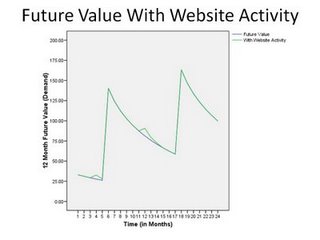Gartner Research recently posted six strategic customer-focused areas for survival in this economic downturn. In a nutshell they focus on automating your way through these hard times. Each of the six acknowledge there will be many growth opportunities arising from the dramatic changes taking place right now.
The challenge their report emphasizes: To find customer- and sales-focuses areas to cut costs and reinvest wisely.
Of the six, three are revenue-generating. Here they are, with a brief explanation of why they were included and what sort of immediate ROI might be expected:
1. Customer Retention Management
Gartner contends that holding onto customers who have a high value — or the promise of high value — is “Essential in difficult economic times.” The firm recommends calculating customer profitability / value and creating retention programs customized to each segment’s needs.
Common sense, right? But the vast majority of businesses are still light years away from calculating customer value — let alone devising ways to retain them!
It was Peppers and Rodgers, of The One-To-One Future fame, who most famously wrote about a business’s #1 asset as being its customers. That book was written in the early 1990s, yet the systematic protection and “mining” of valued customers is still rare — so rare, in fact, that it still inspires whole books about those who dare to do it well. (I’m thinking here of the book describing the astounding success of Harrah’s).
Gartner projects that in 2009, “Companies that develop effective retention management processes will reduce churn of profitable customers by at least 10 percent within six months.”
That’s a substantial bump. If your best customers follow the 80 / 20 Rule (that 20% of customers account for 80% of your profits), then this 10% reduction in churn of those best customers will mean — assuming every other rate is unchanged — an 8% increase in gross profits. That’s not chump change.
One proviso: By gross profits, I mean the money you get to keep after you’ve set up your retention methodology. These efforts aren’t free. But if you approach the process prudently, you’ll be gleaning far more profits from your existing customers, and feeling less strain to replace “churned” customers via ever-more-expensive acquisition tactics.
2. Lead Management
Speaking of customer acquisition, Gartner next recommends that marketing departments become more involved in the lead management process. By doing so, “Companies can improve lead quality and ensure higher conversion rates.” How do they define this expanded role? Here are two examples:
- Leveraging marketing insights — They advise using marketing data that the sales function may not be privy to augment leads before their sent through the sales pipeline
- Leveraging content — Helping the sales force use product information that’s already available to identify prospect needs early, and improve the impact of each sales contact
Companies that automate lead management processes this year will increase revenue by another 10% — all, “Within six to nine months, despite the uncertain economy,” reports Gartner.
3. Online Marketing
Interactive marketing isn’t a panacea. But it is a more cost-effective — and measurable — way to reach customers than traditional techniques. Here, Gartner claims that companies who, “Identify and prioritize three to four online marketing initiatives and measure marketing ROI,” will drive another 10% increase in revenue within six months.
I would be more skeptical of this projection if I haven’t seen it at work personally. Online business-building efforts have a surprisingly fast break-even when they’re done carefully. I see this payback being even greater today than a year ago, in a more hyper-competitive marketplace.
By that I mean we’ll soon be seeing an environment where only the fittest survive. The battle for limited business will shake things out quickly. That means very shortly, those who aggressively reach out for new business will find fewer hands fighting to grab it.
But that comes at some risk. More customer-focused investments need to be made starting today.
Life and Death in the Tar Pit
It’s appropriate that on this, the 200th birthday of Charles Darwin, we take a moment to ask ourselves how we are going to ensure that our businesses are not one of the losers in this heated battle for survival. Gartner’s report highlights constructive areas for the investment of scarce marketing dollars to ensure we come out winners in our category.
 Construct a value model in your transactional records using the following “dummy variables”:
Construct a value model in your transactional records using the following “dummy variables”: Five years ago the book Moneyball was going around the office of respond360, which is the CRM arm of
Five years ago the book Moneyball was going around the office of respond360, which is the CRM arm of 